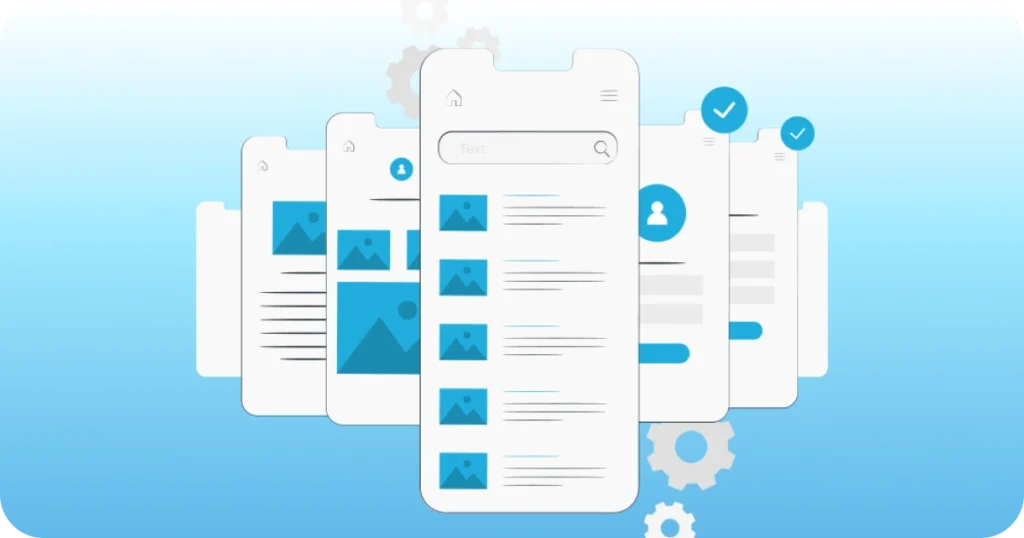Conversion Rate Optimization (CRO) is the process of improving the effectiveness of your website in converting visitors into customers or leads. By identifying weaknesses and applying strategic improvements, businesses can increase the percentage of website visitors who take a desired action. This step-by-step guide outlines how to approach CRO in a systematic way.
1. Define Your Goals and Metrics
To start the CRO process, it’s crucial to define clear, measurable goals. Your goals should be specific and aligned with your business objectives to track progress and evaluate success.
Steps:
Identify Primary Goals: Is your goal to increase sales, generate leads, or capture email sign-ups? Focus on what matters most to your business.
Set Measurable Targets: For example, aim to increase conversions by 10% over the next quarter.
Select Key Metrics: Common metrics include conversion rate, average order value, time on page, and bounce rate. Track these KPIs to monitor improvements CRO.
Why This Matters: Clear goals give you direction and provide a benchmark for evaluating the success of your optimization efforts.
2. Analyze Your Current Performance
Before implementing any changes, it’s essential to assess the current state of your website’s performance. This will help you identify areas of improvement and determine what changes are needed.
Steps:
Use Analytics Tools: Tools like Google Analytics help you track user behavior, conversions, and engagement. Focus on metrics such as bounce rate, traffic sources, and exit pages.
Heatmaps: Tools like Hotjar or Crazy Egg show where users click, scroll, or spend time on your site. Heatmaps provide insights into which elements are getting attention and which are ignored.
Identify Drop-offs: Review your conversion funnel to see where users are leaving. Are they abandoning shopping carts or dropping off after viewing specific pages?
Why This Matters: Data-driven insights help prioritize changes based on actual user behavior, ensuring you’re addressing the right issues.
3. Understand Your Audience
Understanding your audience is key to effective CRO. Tailoring your website to meet the needs, pain points, and preferences of your target users increases the chances of converting visitors into customers.
Steps:
Segment Your Audience: Segment visitors by demographics, behaviors, or past interactions. For instance, first-time visitors may need different messaging than returning customers.
Gather Feedback: Use surveys, polls, or feedback forms to directly ask visitors about their experience. What are they looking for, and what obstacles are they facing?
Analyze Customer Reviews: Review customer feedback and testimonials to uncover what users like or dislike about your products or services.
Why This Matters: A personalized approach enhances user experience and helps create more targeted offers, increasing the likelihood of conversion.
4. Identify Bottlenecks and Friction Points
Once you understand how users interact with your site, it’s time to identify bottlenecks—points in your conversion process where visitors are experiencing friction or abandonment.
Steps:
Simplify the Checkout Process: For e-commerce websites, simplify the checkout process to minimize cart abandonment. Consider reducing the number of form fields, offering guest checkout, and being transparent about shipping costs.
Improve Page Load Speed: Slow loading times can dramatically affect conversion rates. Use tools like Google PageSpeed Insights to optimize images and minimize scripts to speed up your site.
Assess Navigation: Ensure that your site’s navigation is intuitive and users can easily find what they’re looking for without frustration.
Why This Matters: Removing friction points in the conversion process leads to a smoother user experience and higher conversion rates.
5. Run A/B Testing
A/B testing allows you to test different variations of elements on your site and determine which one performs best. This data-driven approach helps you make informed decisions about changes to your website.
Steps for A/B Testing:
Identify Elements to Test: Focus on high-impact elements such as CTA buttons, headlines, images, and form lengths.
Create Test Variations: For example, test two different versions of a headline or CTA button to see which one leads to more conversions.
Run the Test: Split your traffic between the two versions and track performance over time. Make sure the sample size is large enough to yield statistically significant results.
Analyze Results: After the test concludes, compare the performance of the two variations. Implement the version that performs best.
Why This Matters: A/B testing helps you make data-backed decisions, ensuring that each change you make is effective in improving conversions.
6. Optimize Your Landing Pages
Your landing pages are often the first point of interaction with your visitors. A well-optimized landing page can make the difference between a bounce and a conversion.
Steps:
Craft a Clear, Compelling Headline: The headline should clearly communicate the value proposition and align with the user’s intent. For example, if you’re offering a product, make sure it’s clear what the product solves.
Create Strong CTAs: Your call-to-action (CTA) should be prominent, clear, and action-oriented. Use verbs like “Get Started,” “Buy Now,” or “Learn More.”
Use Trust Elements: Add social proof, such as testimonials, reviews, or security seals, to help visitors trust your brand and feel more comfortable taking action.
Simplify the Form: If your goal is to collect leads or sign-ups, ensure the form is short and simple. Only ask for essential information to minimize friction.
Why This Matters: A well-designed landing page drives users towards conversion by making it easy for them to understand what’s in it for them and what to do next.
7. Improve User Experience (UX)
A good user experience is crucial for increasing conversions. If visitors find your website difficult to navigate or frustrating to use, they’re less likely to complete a conversion.
Steps to Improve UX:
Mobile Optimization: With mobile traffic on the rise, ensure your website is fully responsive and loads quickly on mobile devices.
Optimize Navigation: Keep navigation simple and intuitive, ensuring users can easily find the information or product they’re looking for.
Use High-Quality Images: Visual elements should support your message without overwhelming the user. Ensure all images are clear, relevant, and properly sized.




